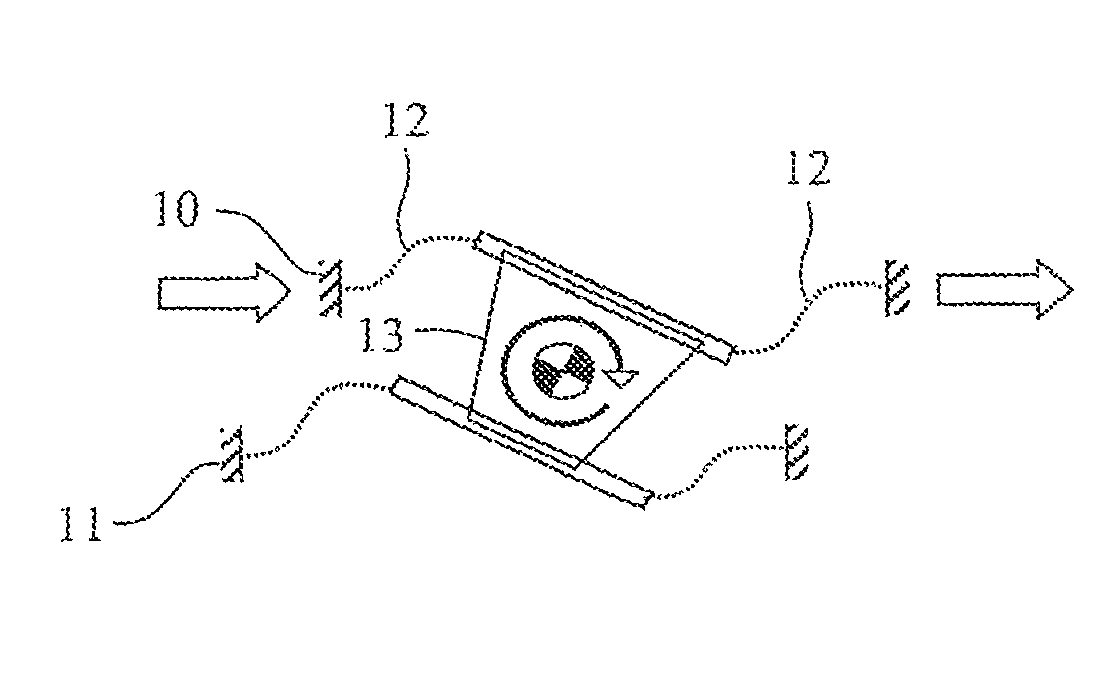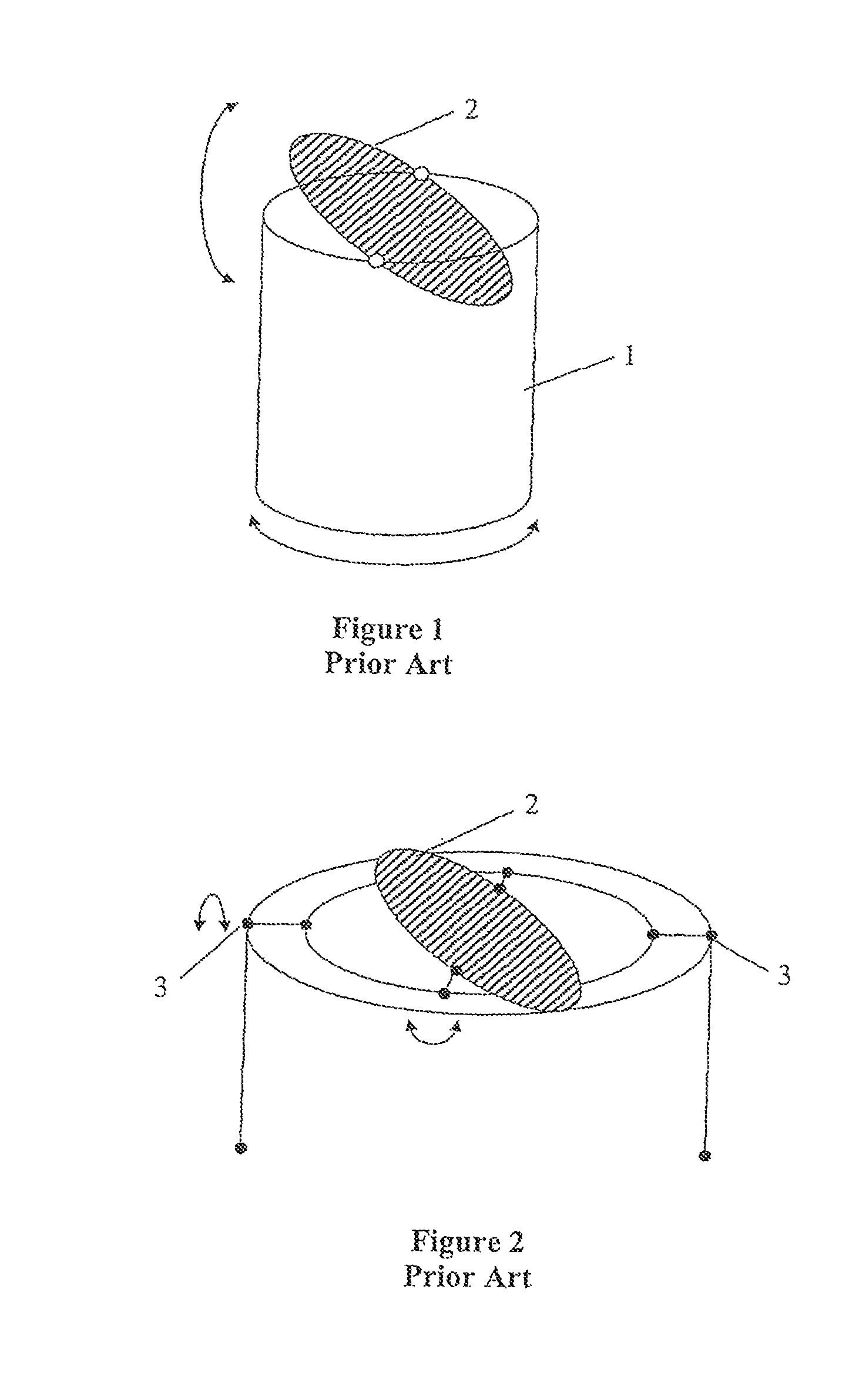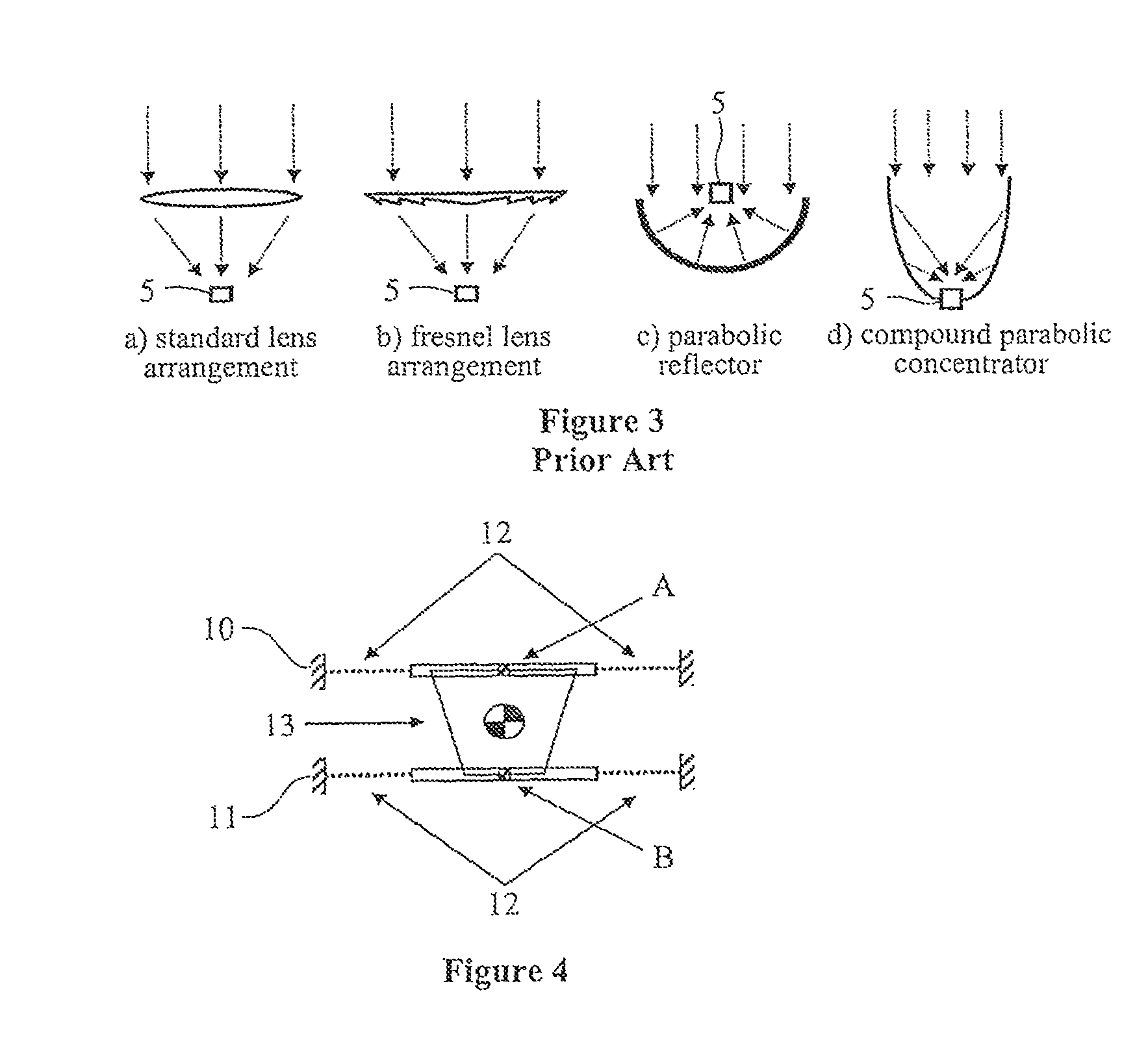Device for driving a light receiving element to track a light source
a technology of light receiving element and light source, which is applied in the direction of photometry, solar heat collector moving/orientation, solar radiation concentration, etc., can solve the problems of mechanical tracking system adding significant cost to the final device, photovoltaics are expensive to produce, and historically been attractive sources of power, etc., to save the cost and complexity of providing, and the effect of strong tension
- Summary
- Abstract
- Description
- Claims
- Application Information
AI Technical Summary
Benefits of technology
Problems solved by technology
Method used
Image
Examples
Embodiment Construction
[0048]Referring to FIGS. 1 and 2 there is shown, as discussed above, examples of prior art light tracking arrangements that are used to support solar light collecting devices. In the arrangement of FIG. 1 a rotatable post 1 supports a tilting plate 2 which supports, in use, a light collecting element, so that tracking of the sun during its movement during the day can be performed to optimise light collection. In alternative arrangements following the same scheme, 1 rotatable post is used to support more than 1 tilting plate.
[0049]FIG. 2 shows an alternative arrangement in which a similar tilting plate is provided but supported on a further pivotal support component 3. In alternative arrangements following the same scheme, (e.g. U.S. Pat. No. 4,968,355, Johnson), many plates are connected to a single pivotal support
[0050]FIG. 3 shows optical elements that have been used in prior art devices and which can be employed in the present invention. In each of these a photovoltaic element 5 ...
PUM
 Login to View More
Login to View More Abstract
Description
Claims
Application Information
 Login to View More
Login to View More - R&D
- Intellectual Property
- Life Sciences
- Materials
- Tech Scout
- Unparalleled Data Quality
- Higher Quality Content
- 60% Fewer Hallucinations
Browse by: Latest US Patents, China's latest patents, Technical Efficacy Thesaurus, Application Domain, Technology Topic, Popular Technical Reports.
© 2025 PatSnap. All rights reserved.Legal|Privacy policy|Modern Slavery Act Transparency Statement|Sitemap|About US| Contact US: help@patsnap.com



